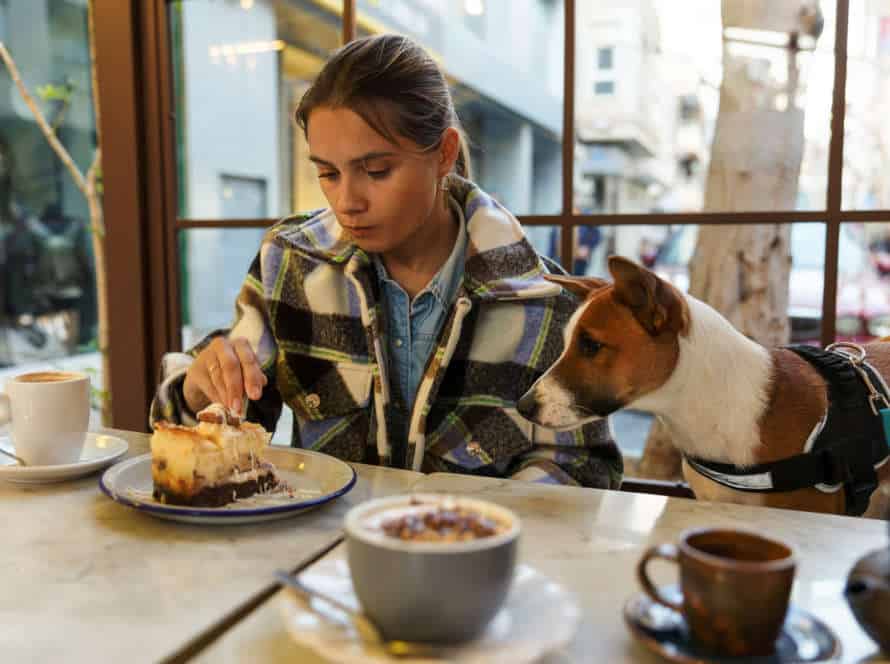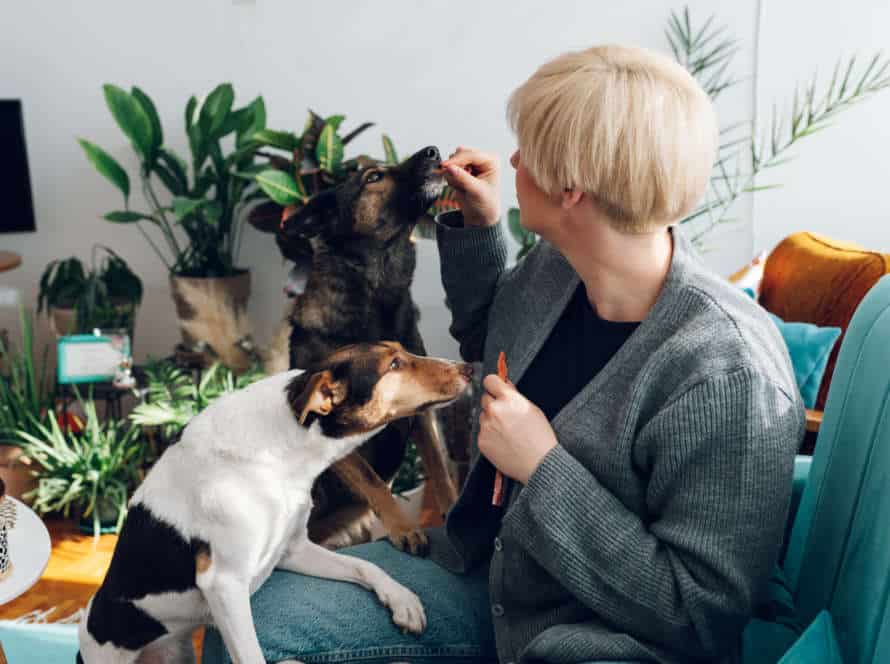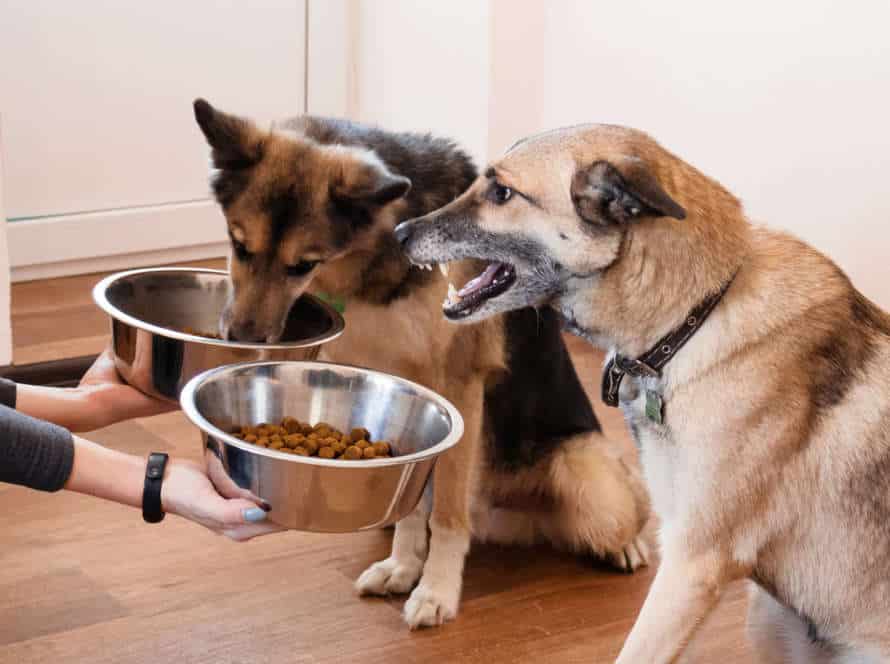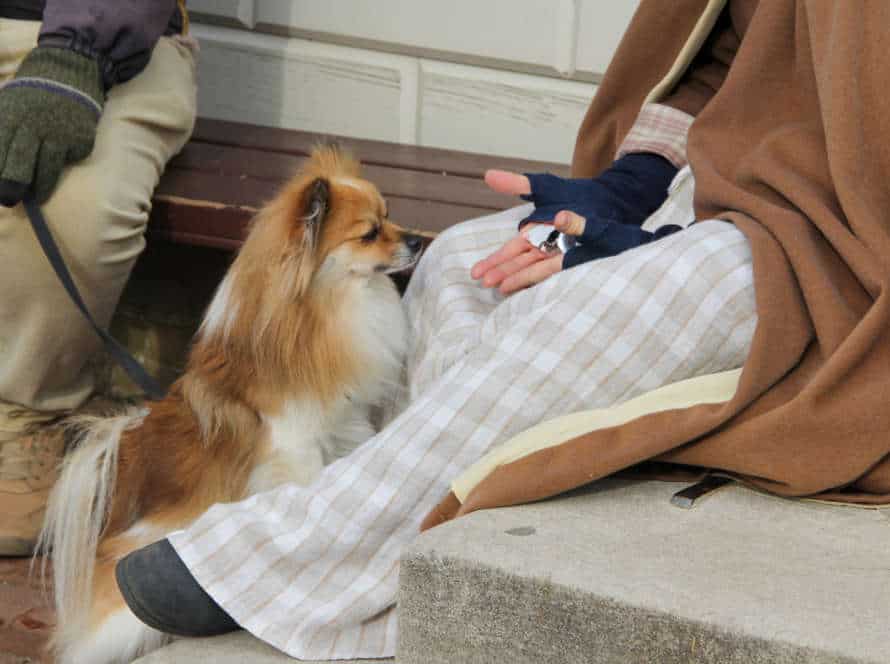Fearful Dogs: Overcoming Socialization Barriers
To aid fearful pups in achieving a content and healthier life, overcoming socialization barriers is a must. Causes of timid behavior in dogs can arise from numerous sources, for example; lack of socialization during the 3-14 week crucial period, genetic predisposition, and potentially from past anguish or maltreatment. Notwithstanding the source, there are numerous steps owners can take to confront socialization barriers and help their dogs beat their fears.
Tips include:
- Gradually introducing them to new creatures, places, and people
- Utilizing positive reinforcement training techniques
- Creating a secure and homey atmosphere for the pup
- Consulting with a qualified dog trainer or veterinary behaviorist if necessary.
By utilizing these strategies, owners can assist their fearful dogs in gaining more assurance and leading a satisfying life. Bear in mind, when dealing with fearful dogs, patience and commitment are essential.
Understanding Fearful Dogs
Fearful dogs often have a tough time socializing. We must comprehend why they act fearfully, so that we can build a successful plan to make them feel safe in all situations. Once we understand the cause of their fear, we can formulate a plan to help them overcome their socialization issues.
Identifying signs of fear and anxiety in dogs
Knowing signs of fear/anxiety in doggies is necessary for helping your pup overpass its socialization obstacles and have a healthy, joyful life. These are a few indications that your dog is scared/nervous:
- Trembling/Shaking
- Excessively Panting/Drooling
- Pacing/Restlessness
- Hiding/Cowering in corners
- Urinating/Defecating in house
- Aggressiveness/Biting
Acknowledging these signs quickly can help you take the needed steps to solve your pup’s fear/anxiety. This might require socialization training, positive reinforcement techniques and in some cases, the help of a professional trainer/behaviorist. Remember; with patience and consistency, you can assist your fear-filled pup to overcome its socialization obstacles and live a merry, strong life.
Understanding the different types of fear in dogs
Fear is a common emotion in dogs. To help your scared pup, understand the different types of fear. These include:
- Social fear (fear of unfamiliar people/dogs)
- Noise fear (loud noises like fireworks or thunderstorms)
- Object fear (unfamiliar objects such as vacuums or bicycles)
- Separation anxiety (fear of being alone).
To help your fearful dog, first figure out the cause of their fear. Then, gradually introduce them to the thing that scares them in a gentle and positive way. Go slowly and patiently—overwhelming them will not help! If you need extra help, ask a vet or canine behavior specialist for a tailor-made solution for your pet.
How fear can affect your dog’s behavior and overall well-being
Fear can have a big effect on how a dog behaves and feels. Dogs that are scared can be aggressive or shy away from people. Comprehending fear in dogs is essential to help them break through socializing issues. Here are some ideas to consider:
- Fear is a normal emotion, and it can’t be fixed quickly.
- Dogs that are scared need understanding, consistency, and rewards to build trust and trustworthiness.
- Starting early to socialize is key to keeping fear from growing in dogs as they get older.
With the right techniques and care, scared dogs can learn to manage their fears, be more sure of themselves and sociable, and form a closer connection to their owners.
Causes of Fearfulness in Dogs
Fearfulness in dogs has numerous causes. Genetics, socialization and environment are all possible sources. When scared or fearful, a dog may act out. They might show nervous behaviors, bark or growl, or try to escape or hide. To help them, it’s important to understand why they are fearful.
Lack of socialization and traumatic experiences
Fearfulness in dogs can be due to improper socialization or traumatic experiences.
No Socialization: Pups need to be exposed to different people, animals, and places to be assured. If not, fearfulness in pups as adults can occur.
Traumatic Events: Abuse, disregard, or a traumatic event such as a car crash or loud fireworks can result in fearfulness in canines. This can lead to a lack of trust in people, fear of certain settings, and heightened anxiety levels.
Overcoming the worries of fearful dogs requires patience, positive reinforcement, and a gradual approach to fresh experiences that is customized for each dog’s particular needs. Asking a professional dog trainer or behaviorist for support can be greatly beneficial.
Genetics and breed predispositions
Fearfulness in dogs can stem from many sources. Genes, which determine the breed, can be a cause. For example, herding breeds such as Border Collies, Australian Shepherds and Corgis may be more anxious and fearful due to certain genetic traits. Labrador Retrievers and Golden Retrievers, on the other hand, tend to be more resilient and confident.
Environmental aspects, like socialization and exposure to different things, also affect fearfulness in dogs. Desensitization, counter-conditioning, and positive reinforcement training can help with socialization barriers.
If your pup is showing fearfulness, a vet or animal behaviorist can help to determine the root cause and create a treatment plan that takes into account genetic and environmental factors.
Health issues and pain-related fear
Health problems and pain-related phobias can be the source of fearfulness in dogs. This can make it hard for them to mingle with humans and other animals.
Dogs with chronic pain or health issues such as arthritis, hip dysplasia, and dental problems might be especially anxious and fearful when socializing. They could also show aggressive behavior, leading to isolation and distress.
To get over these socialization problems, you should recognize and deal with the underlying health issues afflicting your dog. Speak to a vet to discover the best way to treat it, including taking medicines or physical therapy.
Also, exposing your dog to social situations gradually can help them conquer their fear and anxiety. Begin with brief, nice meetings with other creatures and people. Reward good behavior with goodies and compliments. Over time, these good experiences will help your dog become more confident and safe in social situations.
Overcoming Socialization Barriers
Fearful pups can be tricky when it comes to socializing. They may act scared when meeting new people or animals. But, this doesn’t mean they can’t become great socialized dogs. Here are some tips and tricks to help overcome fear when socializing your pup.
Early socialization techniques and puppy classes
Early socialization is key to help fearful puppies adapt and be happy. Here are some tips:
- Start early. Introduce young pups to people, animals and new settings.
- Positive reinforcement. Reward good behavior with treats, toys, or compliments.
- Go to classes. Puppy classes offer a structured, supervised environment.
- Go slow. Gradually expose your pup to new experiences.
- Get help. If your pup shows fear or aggression, seek a pro’s advice.
These techniques will help ensure a content and healthy pup!
Desensitization and counterconditioning methods
Desensitization and counterconditioning are two approaches to overcoming socialization barriers, which help fearful dogs become comfortable in their environment.
Desensitization involves slowly introducing the dog to the thing they fear. For instance, if a dog is scared of vacuum cleaners, start with the vacuum cleaner in view, but off. Gradually increase the exposure until the cleaner is in the same room as the dog.
Counterconditioning changes the dog’s emotion about what they fear. One way to do this is to pair the stimulus with something the dog likes, like food or toys. For instance, if a dog is afraid of strangers, have a stranger approach offering a treat.
These methods take time and patience, but can be successful in helping fearful dogs. It allows them to live more comfortably.
Positive reinforcement training and behavior modification
Positive reinforcement training and behavior modification are great for fearful dogs. Here’s how to get success:
- Treats, praise and toys are perfect for rewarding good behavior and stimulating social interaction.
- Take it slow! Start with low-stress situations and work up to more challenging ones.
- Keep training sessions short and consistent.
- Show understanding and patience for dogs who are scared. Give them comfort and support.
- Get a professional dog trainer or behavior specialist if needed. They’ll help you create a tailored training plan and address any underlying behavior problems.
- With time, patience and regular training, even the most scared dogs can learn to overcome their socialization barriers and lead a happy, healthy and balanced life.
Working with a Professional
Professional help is a must when teaching apprehensive pups to conquer their shyness. An experienced trainer can help you craft a personal plan to teach your fur friend how to be relaxed and sociable. The trainer can also give you advice, guidance, and the right tools to assist you.
Choosing a qualified and experienced dog behaviorist or trainer
Choosing the perfect dog behaviorist or trainer is essential when attempting to overcome socialization issues in scared dogs. Here are some tips to help you find the ideal person:
- Research their experience working with fearful dogs.
- Check out their qualifications, such as certifications or affiliations with certain organizations.
- Request some references and check out online reviews and ratings.
- Look for someone who uses positive reinforcement techniques and focuses on building trust and confidence.
- Be ready to ask questions and discuss your pet’s needs, goals, and temperament before hiring them.
- Recall that this process can take time and patience, but the right pro can help your pet become more comfortable and confident in social situations.
What to expect in the training process and timeline
When working with a pro to help your scared pup, the training process and timeline depend on the pup’s fear level and the pro’s techniques.
Generally, you can expect:
- A consultation to evaluate your pup’s behavior and plan the best route.
- Training using desensitization and counter-conditioning which can take weeks or even months.
- Homework to continue progress outside of training.
- Follow-up sessions to monitor progress and adjust the plan as needed.
- The timeline for overcoming socialization barriers can vary widely. It could take several months or even years to see progress.
Be patient and stay dedicated to the training to help your pup!
Continued training and maintenance to ensure long-term success
It is essential to work with a pro for conquering socialization challenges in fearful dogs. But that’s not enough – continual training and upkeep are needed for lasting success. Here are some suggestions for keeping your pup socialized:
- Regularly take your dog to different places and scenarios to reinforce socialization techniques.
- Keep the rules and instruction techniques consistent to stop any deterioration in behaviour.
- Make sure your pup knows the basics like ‘sit‘, ‘stay‘, and ‘come‘ to make them feel secure and self-assured in new settings.
- Stimulate your dog mentally with activities and puzzles to keep them from becoming bored or anxious.
Pro Tip: Consistency is key! Remain patient and consistent, and don’t be afraid to approach a pro if you need help.
Frequently Asked Questions
Q: What are some signs that my dog is fearful or anxious around others?
A: Dogs may exhibit trembling, hiding, excessive barking or growling, cowering, and even biting or snapping when fearful or anxious around others.
Q: Can fearful dogs be socialized?
A: Yes, fearful dogs can be socialized with patience, positive reinforcement, and gradual exposure to their triggers. It is important to work with a professional trainer or behaviorist to develop a plan that works for your specific dog.
Q: Will socialization necessarily ‘fix’ my dog’s fearful behavior?
A: While socialization can improve your dog’s behavior, it is not a guaranteed fix. Some dogs may still exhibit fearful behavior even with socialization, and additional training or medication may be necessary.
Q: How long does it take to socialize a fearful dog?
A: The length of time it takes to socialize a fearful dog depends on the severity of their fear and their individual temperament. It could take weeks or even months of consistent training and socialization to see improvement.
Q: Can I socialize my fearful dog on my own or do I need professional help?
A: While some owners may be able to socialize their fearful dog on their own, it is recommended to work with a professional trainer or behaviorist who can provide expertise and guidance throughout the process.
Q: Can medication help with socialization efforts for a fearful dog?
A: Yes, medication can be used in conjunction with socialization efforts to help manage a dog’s fear and anxiety. However, it is important to work with a veterinarian to determine the best medication and dosage for your individual dog.







